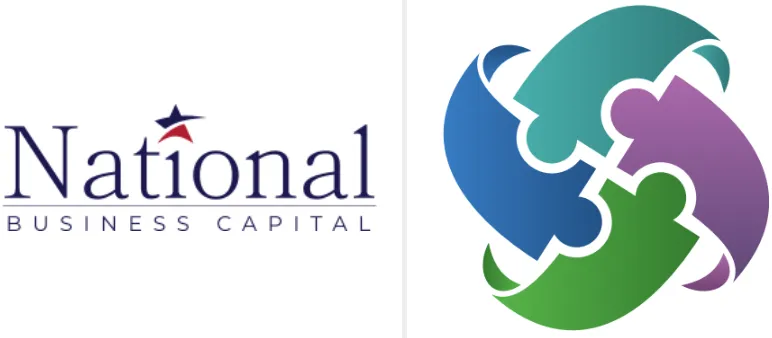
Long-Term Working Capital: Eligibility Requirements
This financial tool is an important source of liquidity for many companies, which is why its use has been growing on a global level.
According to Verified Market Reports, the Working Capital Loan Market size was valued at USD 1.38 Trillion in 2023 and is projected to reach USD 2.65 Trillion by 2030, growing at a CAGR of 10.24% during the forecast period 2024-2030.
However, if you are looking to qualify for a long-term working capital loan, you will have to meet specific eligibility requirements that prove that you are creditworthy. In this article, we will take a look at some of the most important criteria that lenders will require you to meet.
What Is a Long-Term Working Capital Loan?
A working capital loan is a type of financing tool that you can use for your day-to-day operating needs, such as paying wages, covering rent and utilities, purchasing inventory, or addressing cash flow gaps due to seasonal fluctuations or delayed payments.
While working capital loans are typically short-term (1 year), a long-term working capital loan is also an option with financial institutions such as Specialty Finance Group, National Business Capital.
It refers to a loan with an extended repayment period compared to short-term loans, usually between 1 and 5 years. For larger, well-established businesses, lenders may offer repayment periods that are even longer than five years.
What Are The Features of a Long-Term Working Capital Loan?
Just like any type of business loan, a long-term working capital loan has its own unique set of features and characteristics, including:
Purpose – It’s designed to fund daily operating needs, such as paying rent or salaries. However, it can also be used for growth initiatives such as investing in technology or entering new markets.
Loan Amount – The funding amount of a long-term working capital loan depends on several factors, such as the size of your business and your creditworthiness. With National Business Capital, you can fund up to $10 million.
Repayment Term – As we mentioned earlier, short-term working capital loans are typically repaid in 1 year, while long-term ones can be repaid between 1 and 5 years, or more depending on the business.
Interest Rates – The interest rates for long-term working capital loans are usually higher than short-term ones, but lower than lines of credit or more risky, short-term financing options.
Secured vs Unsecured – Long-term working capital loans can be either secured or unsecured. Secured ones require that you provide a collateral, which is an asset of value that the lender can seize in case you fail to repay the loan.
Loan Structure – The working capital loan can be structured as a lump sum payment, which means that you will receive the whole sum upfront. It can also work as a revolving line of credit, where you can draw funds as needed.
Repayment Schedule – Repayment schedule for long-term working capital loans is usually structured in monthly installments, which include both principal and interest. Some lenders may allow interest-only payments for an initial period.
What Are the Eligibility Requirements for Long-Term Working Capital Loans?
If you are looking to qualify for a long-term working capital loan, it’s important to get a good understanding of the eligibility requirements that you will have to meet. While the exact criteria will depend on the lender, let’s take a look at some of the key ones:
Business Credit Score of At Least 600
When applying for a working capital loan, you will have to show a business credit score of at least 600. The higher the credit score, the better terms and rates you may be able to get – as it shows lenders that you are creditworthy, and able to repay the loan on time.
You may still be able to get a working capital loan if your credit score is less than perfect if you apply with an online or alternative lender. Banks and other traditional financial institutions are very stringent with their requirements.
Minimum Annual Revenue of $100k Or More
Another key requirement in order to qualify for a long-term working capital loan is to have a minimum annual revenue, typically in the range of $100,000 to $500,000. However, lenders may request a higher revenue if you are applying for a higher loan amount, or if you are defaulting on other eligibility criteria.
This requirement ensures that you are able to handle your loan repayments – the higher the revenue, the higher the likelihood of securing a larger loan amount.
At Least One Year in Business
If you are looking to qualify for a long-term working capital loan, another key requirement you’ll have to meet is time in business of at least 1 year.
However, some lenders may require at least 2 years of business operations to ensure that you have stability and a proven track record of managing cash flow. If you are applying as a new business or a startup, you may find it harder to qualify, so you might have to compensate with substantial collateral or a strong credit history.
Profitability And Cash Flow
To get approved for a long-term working capital loan, you will also have to demonstrate profitability and a steady cash flow. During the application process, lenders will review your financial health, and ensure that you have enough income to cover loan repayments.
If you have a positive cash flow and financial statements that show growing profits, you will typically have higher chances of approval. In addition, make sure to present a low DTI ratio (under 40%) to signal lenders that you are able to manage debt responsibly.
Collateral (For Secured Loans)
If you are applying for a secured long-term working capital loan, you will also have to provide collateral such as equipment, real estate, or inventory to back the loan. In case you fail to repay the loan, the financial institution will have the right to seize it to recover the loss.
If you have a lower credit score or a shorter history in business, you will most likely have to provide collateral. The exact requirements may vary, but they will usually have to match the loan amount.
Financial Documents
In addition, you will have to provide financial documents for your business in order to get approved for a long-term working capital loan. This includes, but is not limited to:
Profit and loss statements
Balance sheets
Cash flow statements
Tax returns (past 2-3 years)
Bank statements
These documents will help your lender assess your overall financial health, as well as your capacity to handle long-term loan payments.
Other Eligibility Criteria
In addition to the above-mentioned eligibility criteria for long-term working capital loans, lenders may also have other requirements, such as a detailed business plan to reassure lenders of future success, and your ability to repay the loan.
For smaller businesses or startups, some lenders may require a personal guarantee from the business owner.
What Are the Benefits of Long-Term Working Capital Loans?
There are multiple benefits of long-term working capital loans – here are some of the most common ones:
Extended repayment terms, which lead to lower monthly payments
More liquidity to handle fluctuations in revenue
Provide funds to help you grow your business
Can be used for various operational needs
Typically offer lower interest rates, especially when secured
They can help you build your business’ credit profile
Provide a financial cushion to navigate unexpected challenges
And last but not least, a long-term working capital loan – unlike equity financing – doesn’t require you to give up any ownership or equity in the company.
Qualifying for a Long-Term Working Capital Loan with NBC
If you want to qualify for a long-term working capital loan, look no further than National Business Capital. With $2+ billion financed since 2007, multiple awards, and an experienced team of Business Finance Advisors, we have everything you need to find the best financing options for your project.
Are you ready to get started? Apply here.

